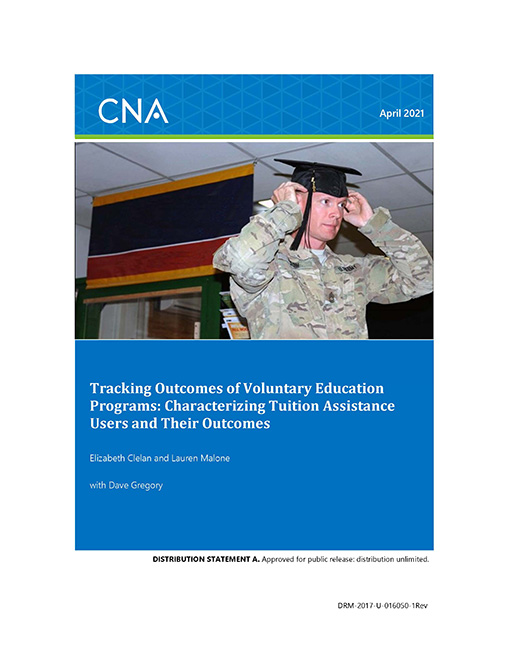Tuition Assistance (TA) is the primary education benefit that the Department of Defense (DOD) provides to Servicemembers to ease the financial burdens and academic readiness hurdles of continuing education while in service. The 2014 DOD Appropriations Bill mandated a study tracking outcomes for those who receive TA. A number of metrics were requested, both aggregated and at the educational-sector level (public, private for-profit, or private not-for-profit). In a previous report, we presented tables containing all of the requested statistics necessary to satisfy the congressional requirement, and we discussed some revealing differences across Services and over time.
That report did not, however, analyze the potential reasons behind the trends and differences we observed. This report fills that gap; we conduct empirical analysis to determine the military and demographic characteristics that are associated with TA use and positive education outcomes from TA use (e.g., attaining any degree, attaining a bachelor’s degree or higher, attaining a high course completion rate). We then use these findings to highlight subpopulations that could benefit from targeted counseling—namely, those who are using TA at higher rates than their counterparts but are among those who are less likely to experience positive TA outcomes. We recognize that other outcomes are important in evaluating the overall success of the TA program, such as longer term employment outcomes and how Servicemembers use the education attained through TA to enhance their post-service lives. Such questions, however, were beyond the scope of this effort.
Servicemembers who are more likely to use TA but less likely to experience positive TA outcomes include the following groups:
- Those in the E1-E3 paygrades
- Enlisted female Servicemembers with three or more dependents
- Black Servicemembers (both officers and enlisted)
- Hispanic officers
- Servicemembers taking most of their courses in the public sector
We find that TA use among these Servicemembers is high, suggesting that they do not lack the desire for additional education but could use guidance in how to navigate the educational system and balance their educational and other goals.
Download reportDISTRIBUTION STATEMENT A. Approved for public release: distribution unlimited. Public Release.
Details
- Pages: 144
- Document Number: DRM-2017-U-016050-1Rev
- Publication Date: 4/30/2021
